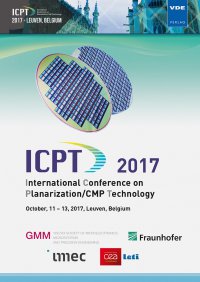Effect of Corrosion Inhibitor and Non-ionic Surfactant on CMP of Cu/Co Barrier Stack
Konferenz: ICPT 2017 - International Conference on Planarization/CMP Technology
11.10.2017 - 13.10.2017 in Leuven, Belgium
Tagungsband: ICPT 2017
Seiten: 5Sprache: EnglischTyp: PDF
Persönliche VDE-Mitglieder erhalten auf diesen Artikel 10% Rabatt
Autoren:
Jiang, Liang; Qian, Linmao (Southwest Jiaotong University, Chengdu 610031, People’s Republic of China)
He, Yongyong (Tsinghua University, Beijing 100084, People’s Republic of China)
Inhalt:
Cobalt has been confirmed as one of the most promising barrier materials for the nextgeneration ultra-large scale integrated circuits. This paper mainly investigated the effects of corrosion inhibitor and non-ionic surfactant on the chemical mechanical planarization performance of Cu/Co barrier stack in H2O2-glycine based weakly alkaline slurries. The results reveal that, a tunable MRR selectivity of Co vs. Cu as well as the superior corrosion inhibition can be realized by selecting the proper corrosion inhibitor and non-ionic surfactant. More specifically, the combination of methyl-BTA and non-ionic surfactant such as Pluronic P123 can realize a high MRR selectivity of Co vs. Cu, such as 22, while based on the existing results, it can be inferred that the combination of 1,2,4-triazole and non-ionic surfactant is likely to realize a relatively low MRR selectivity. More investigation is still ongoing to reveal the corresponding passivation mechanism. Keywords: Chemical mechanical planarization, Cu/Co barrier stack, Corrosion inhibitor, Non-ionic surfactant


